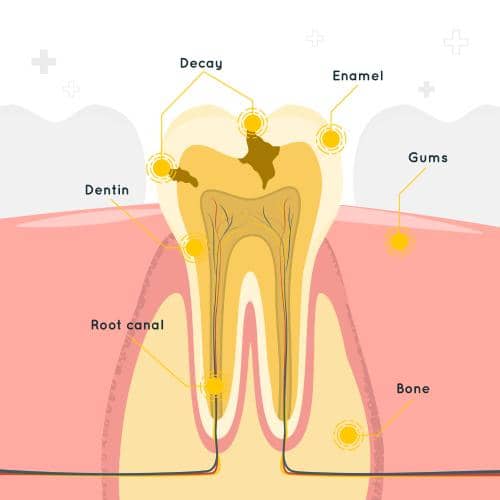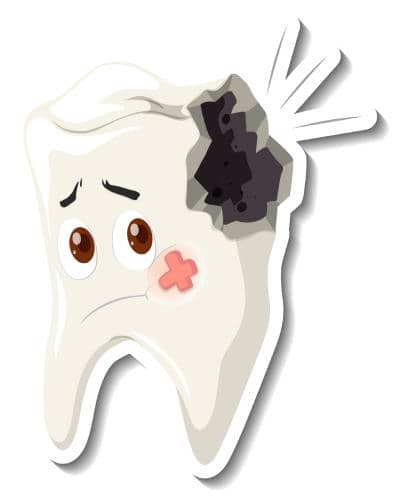Why Wait Two Weeks After a Root Canal for Crown
Root canal therapy is a critical procedure aimed at saving a tooth that is significantly decayed or infected. This treatment involves removing the infected pulp, cleaning the inside of the tooth, and then sealing it to prevent further damage.

After root canal therapy, it’s important to allow your tooth to heal. The healing process typically involves a decrease in pain and swelling as the body repairs the tissues around the previously infected area. The healing period serves to ensure that your tooth has sufficiently recovered before it is subjected to the pressure of a permanent crown.
Potential Risks of Premature Crown Placement
Placing a crown on your tooth prematurely can lead to complications. Before the complete healing process, the tooth can be fragile and prone to damage. It can even lead to more discomfort if the crown is placed before the tooth is healed and surrounding tissues have adequately stabilized. This can create a need for additional dental visits and may even compromise the restoration.
why dentists use Temporary Crowns
During the period between your root canal treatment and the placement of the permanent crown, temporary crowns play a crucial role. They protect the tooth from further infection and exposure to bacteria while offering a degree of function and aesthetic appeal. Moreover, a temporary crown ensures that you don’t have an open or incomplete tooth as you wait for the lab to fabricate your permanent crown, usually scheduled during a follow-up appointment with your dentist or endodontist.
Remember, every treatment plan is tailored to your specific needs, and these guidelines should be discussed with your dental professional.
Finalizing the Dental Restoration
After your root canal, getting the right dental crown and ensuring it fits perfectly are crucial steps to maintaining oral health and the longevity of your tooth restoration.
Selecting the Right Crown Material
Selecting a durable and suitable material for your permanent crown is important. Materials range from gold, known for its durability and less wear on opposing teeth, to porcelain, which offers a color match to your natural color and shape of the teeth. Metal crowns are strong and typically used for molars hidden from view. Your choice should balance aesthetics, functionality, durability, and what your insurance may cover.
The Crown Fitting and Placement Process
The crown placement process involves preparing your natural tooth, taking an impression for a custom fit, and placing a temporary crown until the permanent crown is ready. During fitting, your dentist will use a local anesthetic to minimize discomfort
Post-Procedure Care and Maintenance
After crown placement, proper care is essential to prevent inflammation or infection. Maintain good oral hygiene by brushing and flossing regularly to avoid gum line irritation. Be cautious with hard foods and avoid biting on hard objects. If you experience tooth pain or increased sensitivity, consult your endodontist. Regular dental check-ups are important to monitor the health of your restoration and ensure that the connective tissues and gums remain healthy.
Visit Our Clinic
Smile Care Family Dental
Location :- 155 Little Conestoga Rd, Chester Springs, PA 19425, United States
Email :-contact@smilecarefamilydental.com
Working Hours
Mon – 9Am – 6 Pm
Tue – 9Am – 6 Pm
Wed – Closed
Thur – 9Am – 6 Pm
Fri – 9Am – 6 Pm
Sat – 9Am – 2 Pm
Sun – Closed
Also Read

What Causes Root Canal
Root canal procedures alleviate pain caused by tooth pulp inflammation or infection. Common causes include severe decay, repeated dental procedures on the same tooth, cracks, chips, and infection.

Untreated Root Canal Symptoms
Ignoring untreated root canal symptoms can lead to severe complications like infection spreading to other teeth, bone loss, and dental cysts. Immediate treatment is necessary for severe pain, swelling, or signs of an abscess.

Root Canal Failure Symptoms
Recognizing root canal failure symptoms is crucial to prevent complications. Signs include persistent pain, swelling, sensitivity, discoloration, and gum issues. Failures can occur due to complex root structure, secondary decay, or breakdown of sealing material.

Root Canal Recovery Time
Recovering from a root canal typically takes a few days to a week, varying based on procedure complexity and personal health. Following aftercare instructions, managing pain with medication, resting, and sticking to a soft diet aid in smooth recovery.